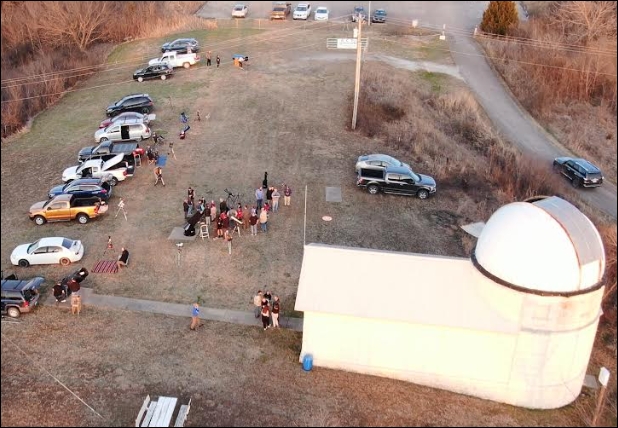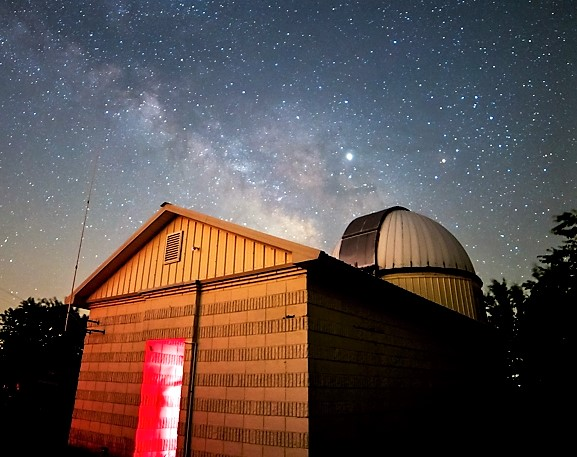Constellations
Learning the constellations in the sky is simple to do and can be done from your home. You do not have to be in a very dark sky. However, you do need to be able to see the main stars of the constellations. If you do not see the stars very clearly, you will need to find a darker location. You need to pick up a sky chart to help you recognize the constellation pattern. You can pick up a copy of Sky & Telescope magazine at your local book store for the current month. In the middle of the magazine, there is a sky chart for the month. You can also pick up a sky chart wheel instead of the magazine. This is a chart where you set the date and time and it shows you what constellations are visible in the sky at that time. It usually can be found in some bookstores, astronomy store, or planetarium.
Now that you have your sky chart from Sky & Telescope or the sky chart wheel, you are ready to begin. Pick 2 days in the week to go outside about one and a half hours after sunset. The days you pick does not have to be the same for each week since the weather can change. You will need to go outside every week for one year. When the year is complete, you should know most of the constellations.
The procedure to do each time you go outside to look at the sky is the following:
-
Since you live in the northern hemisphere, locate the north star Polaris. This is a good reference point because it is always in the same place. The reason it does not move is that the star is directly overhead at the north pole. As the earth spins, the stars move east to west. At the north pole, any stars directly over head will not move since the earth rotates on its polar axis.
-
Now that you have found where the north star is, turn and look toward it. South is now behind you, East is to your right, and West is to your left.
-
Now, look to the west and find the constellations that are in the west on the sky chart. Saying the name of the constellation out loud when you see it will help you remember the name.
-
Do the same thing for the South, East, North and overhead directions. Some constellations are faint and hard to see if you have a lot of light in the sky from the city. Ursa Minor (the little dipper) is not easy to see in the city. Most people find it by locating Polaris first, this star is at the end of the handle in the little dipper.
-
If the sky chart you are using has the name of bright stars, look for them as well.
-
Do the steps one through five each week, 2 nights a week, for one year and that will do it.
Once you have learned the constellations, you will never forget them. As you go outside each week, you will see the sky change from one season to another. Finally, when you get under a very dark sky away from the city lights, the constellations will seem to have disappeared in the many stars above. But you will begin to see them quickly again.
One final note, if you are using Sky Telescope magazine, be sure to locate the planets Mercury, Venus, Mars, Jupiter, and Saturn when they are visible in the sky. Watch the movement of the moon. You will see that it moves from west to east over a period of time. The planets do this as well but move too slowly to see. However, Mercury, Venus, and Mars are close enough to see this movement.
Project - Drawing the Sky
To help you learn the constellations and the night time sky, here is a simple project you can do. This is done once a month and you should pick the same day or close to it each month. Also be sure to choose the same time. When daylight savings occurs, add one hour to the time you went out before. For example, if you went outside at 9:00 PM in March, you would need to go out at 10:00 PM in April. You would stay at 10:00 PM until November at which time you would go back to 9:00 PM because daylight savings would be over.
-
Get yourself 12 sheets of white construction paper at least 12 by 12 inches or 31 by 31 centimeters
-
Cut a round circle so that it is 12 inches (31cm) in diameter (across)
-
Put a N on the top of the circle. This will be the northern part of the sky. In the southern hemisphere, put an S for South.
-
Now draw in the constellations you see in the sky. Only put the main stars that outline the constellation. Also, if there are any bright planets in the sky, put those in as well.
-
This only is done once a month. When you are done, compare your drawing to that of the sky chart and see how well you did.
-
If you were fairly close to the sky above, each chart will show some new constellations in the east and others in the west that disappear.




